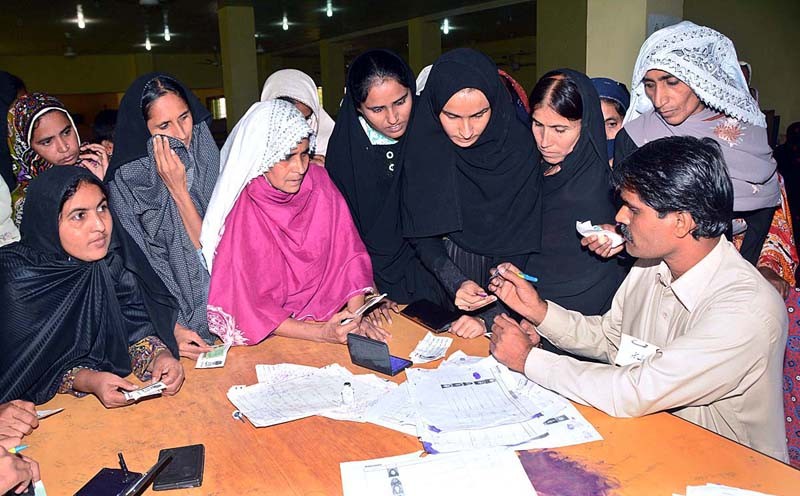

There are a few ways to know the number of unregistered Pakistani women who are eligible to vote. One method is the one the Election Commission of Pakistan adopted. They looked at the fresh electoral rolls of September 2017 and subtracted the number of female voters, 42.42m, from the number of male voters, 54.6m, and reached the conclusion that 12.1m female voters are missing -- using the assumption that the number of male and female voters in the country should be equal.
Using the same method, in March 2013, they had ascertained that the gap between registered female and male voters was 10.97m.
The figures calculated by Tabeer, an Islamabad-based programme working to support the consolidation of democratic processes in Pakistan, are slightly lower, but just as alarming. Tabeer puts the number of unregistered female voters at approximately 10m.
To reach this figure, they fist calculated the ratio of men to women in the country. According to the latest census, they reached a ratio of 95.2 females for every 100 males.
This means that the total number of registered and unregistered female voters in the country will undoubtedly be less than the number of males. This also means that for every 100 male voters, there should be 95.2 female voters -- this would give us 51,977,461 female voters but in fact, according to the latest electoral rolls, we are at 42,424,418 female voters. And that is how Tabeer has realised that 9.6m women are eligible but unregistered to vote.
The phenomenon of a gap between male and female voters is not new but the speed with which the gap has increased since first the advent of the computerised national identity card and then the law which made CNICs compulsory in order to vote is definitely worth looking at.
For the seven elections between 1977 and 2002, the number of women missing from electoral rolls remained below or around 2m. This was the era when electoral rolls were created by door-to-door visits, much like the census.
Read also: Editorial
For the 2008 election, the electoral rolls were created from the Nadra database, but thanks to the Supreme Court, many men and women without computerised national identity cards were also put on the rolls. At this point, the number of women estimated to be missing from the electoral rolls had drastically jumped to 6.4m.
For the 2013 and the upcoming 2018 election, nobody without a CNIC can find themselves eligible to vote and this is what has resulted in the 8.1m and 9.6m women, respectively, being missing from electoral rolls. At current capacity, it will take Nadra 18 years to fill this gap.
The aforementioned ECP data is also divided across districts. The district-wise data goes to show that the problem of the missing women on electoral rolls is not just in far-flung areas. Lahore, home to the ruling party, only has 76 female voters for every 100 male voters. This is almost as bad as FR Lakki Marwat, which has only 75 registered women for every 100 men.
Sindh, with Umerkot, Matiari, Badin, Jacobabad and more districts, seems to have the smallest gap between male and female registered voters, credit for this is given to the Benazir Income Support Programme. The two districts that top the chart for having the smallest gap in male and female voters are Chakwal in Punjab, and Sohbatpur in Balochistan but it should be added that, overall, both these districts have a small number of registered voters.